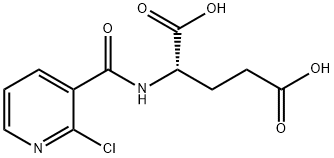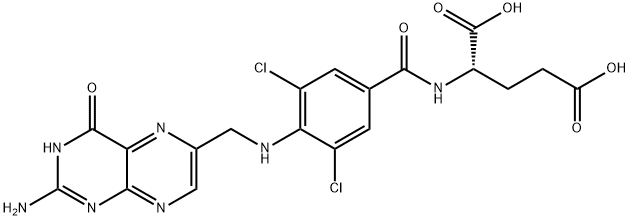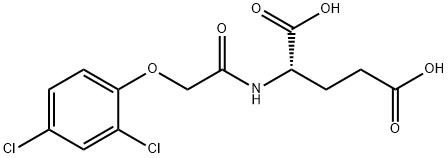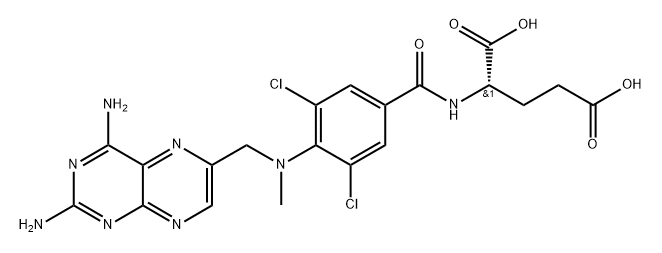L-(+)-Glutamic acid hydrochloride
Synonym(s):(S)-2-Aminoglutaric acid;(S)-2-Aminopentanedioic acid ammonium salt;2-Aminoglutaric acid hydrochloride;Glu HCl;L-Glutamic acid hydrochloride
- CAS NO.:138-15-8
- Empirical Formula: C5H10ClNO4
- Molecular Weight: 183.59
- MDL number: MFCD00012619
- EINECS: 205-315-9
- SAFETY DATA SHEET (SDS)
- Update Date: 2024-12-18 14:15:30

What is L-(+)-Glutamic acid hydrochloride?
Chemical properties
white crystals or fine crystalline powder
The Uses of L-(+)-Glutamic acid hydrochloride
Glutamic Acid Hydrochloride is a flavoring, salt substitute that is soluble in water and very slightly soluble in alcohol and ether. It is obtained by chemical synthesis.
The Uses of L-(+)-Glutamic acid hydrochloride
L-Glutamic acid hydrochloride is used as a digestive aid. It is used in cell culture as a component of MEM non-essential amino acids solution. It has been used as a nitrogen source in the culture of Aspergillus fumigatus NRRL 2436 for fumagillin production.
General Description
L-glutamate is the major excitatory neurotransmitter in mammalian central nervous system (CNS). It interacts with membrane bound glutamate receptors.
Biochem/physiol Actions
L-glutamate plays key roles in development, learning, memory, plasticity and cognition. It plays crucial role in the pathogenesis of neuropathological diseases such as epilepsy, schizophrenia, stroke, ischemia, ALS (amyotrophic lateral sclerosis), Huntington′s disease and Parkinson′s disease. Glutamate is also responsible for the activation of long-term potentiation (LTP) and long-term depression (LTD). Induction of glutamate receptors plays a key role in the pathophysiology of migraine.
Properties of L-(+)-Glutamic acid hydrochloride
| Melting point: | 214 °C (dec.)(lit.) |
| alpha | 25.5 º (c=10, 2N HCl) |
| Density | 1.525 |
| refractive index | 24 ° (C=6, H2O) |
| storage temp. | Store below +30°C. |
| solubility | H2O: 1 M at 20 °C, clear, colorless |
| form | Crystals For Fine Crystalline Powder |
| color | White |
| Odor | at 100.00?%. odorless |
| Water Solubility | 490 g/L (20 ºC) |
| Sensitive | Hygroscopic |
| Merck | 14,4469 |
| BRN | 3565569 |
| Stability: | Hygroscopic |
| CAS DataBase Reference | 138-15-8(CAS DataBase Reference) |
| EPA Substance Registry System | L-Glutamic acid, hydrochloride (138-15-8) |
Safety information for L-(+)-Glutamic acid hydrochloride
| Signal word | Danger |
| Pictogram(s) |
 Corrosion Corrosives GHS05 |
| GHS Hazard Statements |
H314:Skin corrosion/irritation |
| Precautionary Statement Codes |
P260:Do not breathe dust/fume/gas/mist/vapours/spray. P280:Wear protective gloves/protective clothing/eye protection/face protection. P363:Wash contaminated clothing before reuse. P303+P361+P353:IF ON SKIN (or hair): Remove/Take off Immediately all contaminated clothing. Rinse SKIN with water/shower. P305+P351+P338:IF IN EYES: Rinse cautiously with water for several minutes. Remove contact lenses, if present and easy to do. Continuerinsing. |
Computed Descriptors for L-(+)-Glutamic acid hydrochloride
L-(+)-Glutamic acid hydrochloride manufacturer
Medinex Laboratories Pvt Ltd
New Products
Tert-butyl bis(2-chloroethyl)carbamate (S)-3-Aminobutanenitrile hydrochloride N-Boc-D-alaninol N-BOC-D/L-ALANINOL N-octanoyl benzotriazole 4-Hydrazinobenzoic acid 3,4-Dibenzyloxybenzaldehyde Electrolytic Iron Powder 1,1’-CARBONYLDIIMIDAZOLE R-2-BENZYLOXY PROPIONIC ACID 4-HYDROXY BENZYL ALCOHOL 1,1’-CARBONYLDI (1,2-4 TRIAZOLE) S-2-CHLORO PROPIONIC ACID (2-Hydroxyphenyl)acetonitrile 4-Bromopyrazole 5-BROMO-2CYANO PYRIDINE 5,6-Dimethoxyindanone 5-broMo-2-chloro-N-cyclopentylpyriMidin-4-aMine 3-(2,4-Dimethoxybenzyl)dihydropyrimidine-2,4(1H,3H)-dione 6-Bromo-3-iodo-1-methyl-1H-indazole 4-Ethylbenzylamine N-(5-Amino-2-methylphenyl)acetamide 2-(BOC-Amino)4-picoline 1-(4-Methylphenylsulfonyl)-1H-1,2,3-benzotriazoleRelated products of tetrahydrofuran








You may like
-
 L-Glutamic acid hydrochloride 138-15-8 98%View Details
L-Glutamic acid hydrochloride 138-15-8 98%View Details
138-15-8 -
 L-Glutamic Acid Hydrochloride CAS 138-15-8View Details
L-Glutamic Acid Hydrochloride CAS 138-15-8View Details
138-15-8 -
 L-Glutamic acid HCl 99.00% CAS 138-15-8View Details
L-Glutamic acid HCl 99.00% CAS 138-15-8View Details
138-15-8 -
 L-Glutamic acid hydrochloride CAS 138-15-8View Details
L-Glutamic acid hydrochloride CAS 138-15-8View Details
138-15-8 -
 100-71-0 99%View Details
100-71-0 99%View Details
100-71-0 -
 2-ethyl-6-methyl-3-hydroxypyridine succinate 127464-43-1 99%View Details
2-ethyl-6-methyl-3-hydroxypyridine succinate 127464-43-1 99%View Details
127464-43-1 -
 13162-05-5 N-Vinylformamide 99%View Details
13162-05-5 N-Vinylformamide 99%View Details
13162-05-5 -
 1446013-08-6 98%View Details
1446013-08-6 98%View Details
1446013-08-6